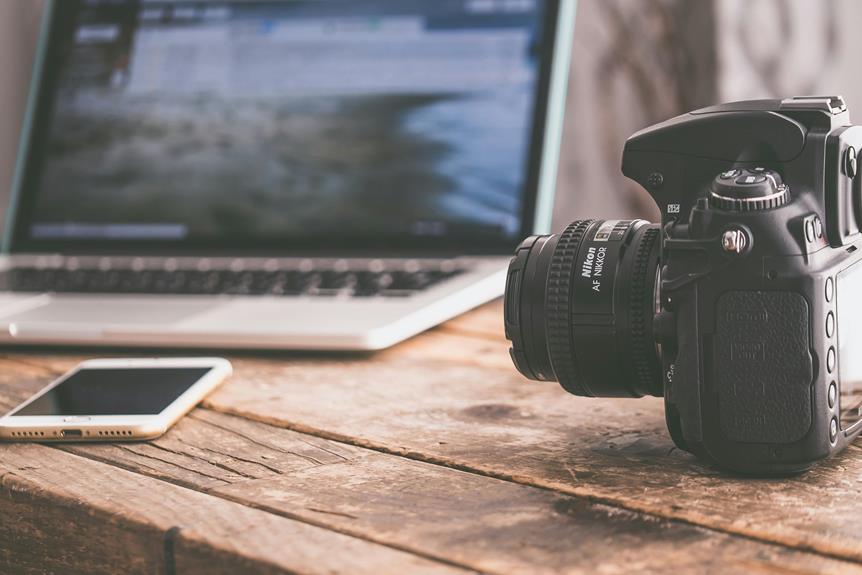
Capture stunning photos by adjusting settings like exposure, white balance, and focus to enhance image quality. Explore composition techniques such as rule of thirds and framing to create balanced and visually appealing shots. Make the most of lighting by using natural or artificial light effectively and experimenting with angles for flattering portraits. Enhance your photos further with editing apps like Adobe Lightroom for precision adjustments. Elevate your smartphone photography skills with these tips and tricks for breathtaking images.
Choosing the Right Settings
When taking photos with your smartphone, always remember to adjust the settings to enhance the quality of your images. Start by exploring the different options your phone offers. Experiment with the exposure, white balance, and focus settings to find what works best for each shot.
Take advantage of the HDR (High Dynamic Range) mode on your phone. This feature helps balance the light and dark areas in your photos, resulting in more vibrant and detailed images. Additionally, consider adjusting the resolution settings. Higher resolutions can capture more detail, but keep in mind that they may also take up more storage space on your device.
Don't forget about the grid feature on your phone's camera. This tool can help you align your shots and create more balanced compositions. Lastly, familiarize yourself with the different shooting modes available, such as portrait, panorama, or night mode. Each mode is designed to optimize specific shooting conditions, so don't be afraid to experiment and see what works best for your photography style.
Mastering Composition Techniques
To enhance the visual impact of your smartphone photos, mastering composition techniques is essential. Composition is the arrangement of elements within a photo to create a visually appealing image. One key technique is the rule of thirds. Imagine breaking your photo into nine equal parts with two horizontal and two vertical lines. By placing your subject or key elements along these lines or at their intersections, you can create a more balanced and engaging composition.
Another important aspect is framing. Use elements in your surroundings to frame your subject, drawing the viewer's eye towards the focal point. Leading lines are also effective in guiding the viewer's gaze through the image. Look for natural or man-made lines like roads, fences, or rivers that lead towards your subject.
Additionally, consider the viewpoint and perspective from which you shoot. Experiment with different angles – crouching down, shooting from above, or trying a bird's eye view – to add interest and uniqueness to your photos. Mastering these composition techniques will take your smartphone photography to the next level.
Lighting Tips for Smartphone Photography
Master the art of utilizing natural and artificial light sources effectively to enhance the quality of your smartphone photography. When shooting outdoors, avoid harsh midday sunlight that creates strong shadows. Instead, opt for the softer light during the golden hours just after sunrise or before sunset. This warm light can add a beautiful glow to your photos, making them more visually appealing.
Experiment with different angles to see how the light interacts with your subject. For portraits, try positioning the light source to the side for a flattering effect that highlights facial features. Additionally, consider using reflective surfaces like white walls or boards to bounce light onto your subject, creating a more balanced and well-lit image.
Indoor photography can be challenging due to limited natural light. To combat this, position your subject near windows or doorways to make use of available light. Alternatively, invest in small LED lights or ring lights to illuminate your subjects evenly. Remember, proper lighting can make a significant difference in the quality of your smartphone photos, so don't underestimate its importance.
Editing Apps for Perfecting Your Shots
Enhance your smartphone photography with the help of editing apps to perfect your shots effortlessly. Editing apps offer a wide range of tools to enhance your photos, from basic adjustments like brightness and contrast to advanced features like selective editing and filters. One popular app is Adobe Lightroom, which allows you to fine-tune colors, exposure, and details with precision. Snapseed is another excellent choice, offering a variety of tools like healing, brush, and perspective editing for more advanced adjustments.
When using editing apps, start by making basic adjustments like exposure and white balance to correct any issues in your shot. Then, experiment with more creative edits like adding filters or adjusting colors to give your photos a unique look. Remember, less is often more when it comes to editing, so try not to overdo it and maintain the natural beauty of your photos.
With editing apps at your fingertips, you can take your smartphone photography to the next level by refining your shots and creating stunning images that truly stand out. Experiment with different apps and editing techniques to find what works best for your style, and watch as your photos transform into captivating works of art.
Conclusion
Now that you have learned about the key settings, composition techniques, lighting tips, and editing apps for smartphone photography, you're ready to take your shots to the next level.
Remember to experiment, practice, and have fun capturing stunning images with your smartphone. With a little bit of creativity and the right tools, you can truly showcase the beauty of the world through your lens.
Keep snapping away and watch your photography skills grow!




